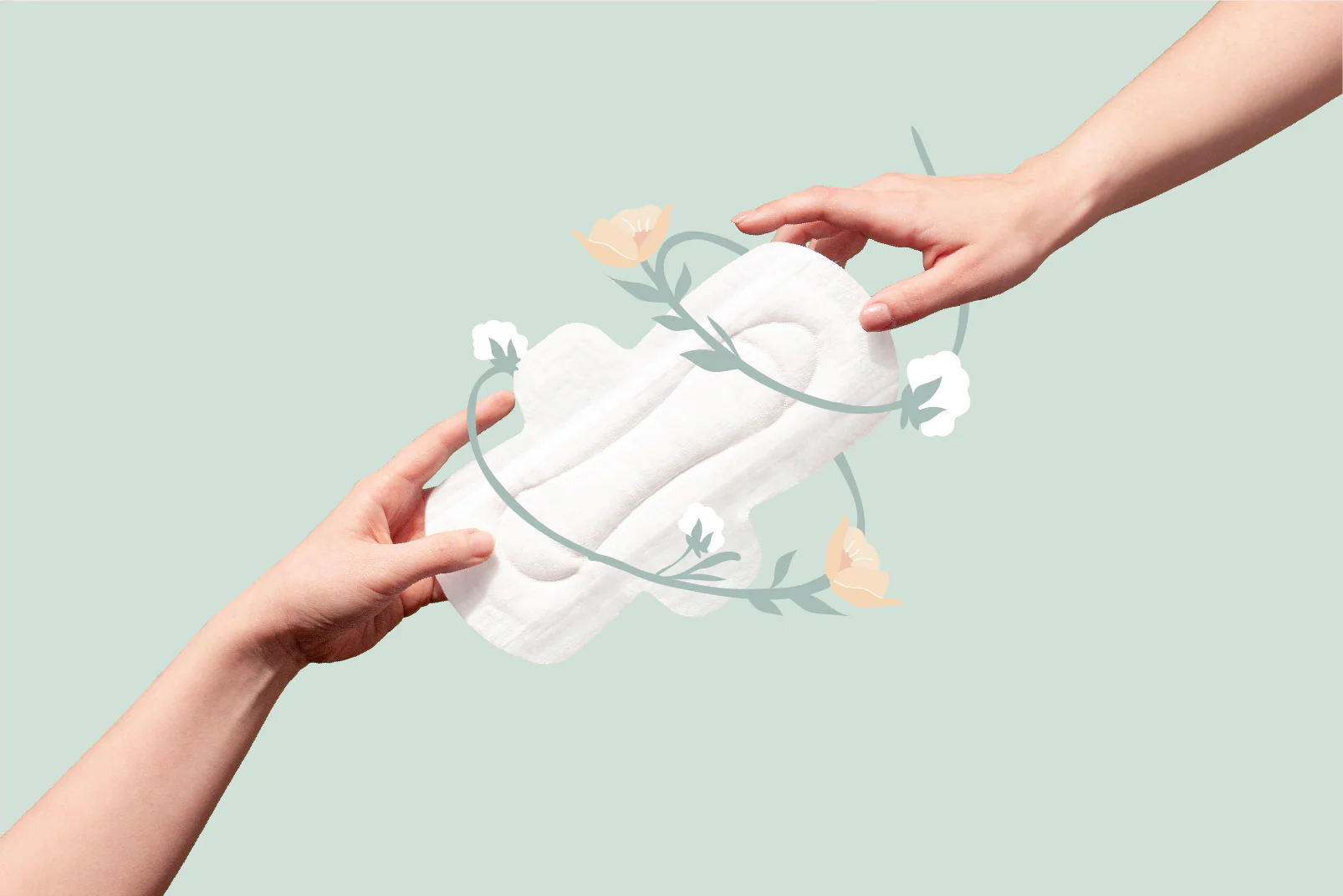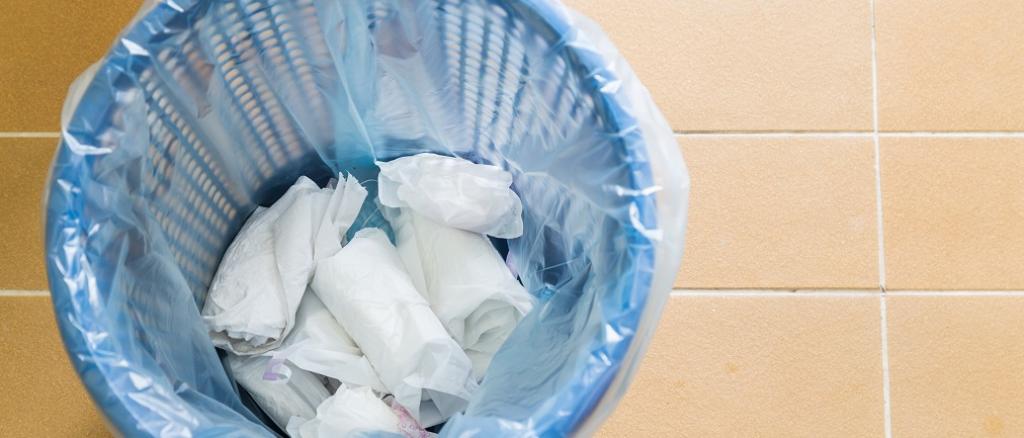In the world of feminine hygiene products, sanitary pads stand as an essential companion for millions of women worldwide. Yet, amidst the comfort and convenience they provide, a lingering question often arises – are sanitary pads truly sterile?
In this article, we look into the intricate world of sanitary pads, examining the manufacturing practices, quality control measures, and the extent to which these products adhere to stringent hygiene standards.
Contents
Are Sanitary Pads Sterile?

Sanitary pads are not sterile, meaning they are not free of all microorganisms. However, they are considered to be clean and safe for use. The manufacturing process for sanitary pads involves several steps to reduce the risk of contamination, including:
- Washing and disinfecting the machinery used to make the pads.
- Using sterile packaging materials.
- Testing the pads for bacteria and other contaminants.
Despite these measures, it is not possible to completely eliminate all microorganisms from sanitary pads. This is because the pads are made of materials that can harbor bacteria, such as cotton and rayon. Additionally, the pads come into contact with the vagina, which is a naturally warm and moist environment that can support the growth of bacteria.
The risk of infection from using sanitary pads is very low. However, there are a few things you can do to reduce the risk even further, such as:
Understanding the Importance of Sterility
When it comes to sanitary pads, sterility may not be a primary consideration for most people. However, understanding the importance of sterility in this context is crucial for maintaining good menstrual hygiene and protecting your health and well-being during your menstrual cycle.
Sterility refers to the complete absence of viable microorganisms, such as bacteria, viruses, and fungi, from a product or environment. While sterile products are commonly used in medical and surgical settings to prevent infections, the sterility of sanitary pads is not typically prioritized.
Factors Affecting Sterility in Sanitary Pads

One important aspect of sanitary pads that often goes overlooked is their sterility. While we commonly prioritize sterility in medical and surgical settings, it is not typically considered in the manufacturing of sanitary pads. However, it is essential to understand the factors that can affect the sterility of sanitary pads to ensure their safety and effectiveness. Let’s delve deeper into these factors:
1. Manufacturing Process
The manufacturing process of sanitary pads involves several steps, including cutting, shaping, and packaging the pads. While the materials used in the production are not sterile in the strictest sense, they are usually processed and assembled in a controlled and clean environment. Sanitary pad manufacturers adhere to strict quality control measures and hygiene standards to minimize the risk of contamination.
2. Packaging and Storage
The sterility of sanitary pads can also be influenced by their packaging and storage conditions. Sanitary pads are typically packaged in sealed plastic wrappers to protect them from environmental contaminants. These wrappers are designed to keep the pads clean and hygienic until they are ready for use. It is crucial for users to store sanitary pads in a clean and dry environment to maintain their hygiene. Pads should be kept in their original packaging until needed to prevent exposure to dust, moisture, or other potential sources of contamination.
3. Handling and Distribution
Another factor that can affect the sterility of sanitary pads is their handling and distribution. Throughout the supply chain, from the manufacturing facility to the retail stores, sanitary pads may be exposed to various environments and conditions. It’s important for manufacturers and distributors to handle the products carefully and ensure that they remain in sealed packaging until they reach the end-users. This helps minimize the risk of contamination and maintains the sterility of the pads.
Ensuring Sterility in Sanitary Pad Usage
When it comes to feminine hygiene products such as sanitary pads, it’s essential to prioritize sterility to maintain your health and well-being. Keeping the pads clean and free from bacteria is crucial, especially during your menstrual period. Here are a few key considerations to ensure the sterility of your sanitary pads:
1. Proper Storage: Storing your sanitary pads in a clean and dry environment is essential for maintaining their hygiene. Avoid exposing them to moisture, which can promote bacterial growth. Additionally, make sure to keep them away from direct sunlight or other sources of heat that could compromise their freshness.
2. Sealed Packaging: Sanitary pads are typically packaged in sealed plastic wrappers. These wrappers serve as a protective barrier, keeping the pads clean and hygienic until you’re ready to use them. It’s recommended to check the packaging before use and ensure it is intact and unopened.
3. Follow Instructions: Each brand of sanitary pads may have specific instructions for usage and storage. It’s crucial to read and follow these instructions carefully to maximize their effectiveness and maintain sterility. Be aware of any recommended storage conditions mentioned on the packaging.
4. Avoid Contaminants: Exposure to environmental contaminants can compromise the sterility of sanitary pads. Be mindful of where you store them, keeping them away from areas prone to dust, dirt, or other potential sources of contamination. This will help ensure that you’re using sanitary pads that are as clean and hygienic as possible.
Conclusion
Prioritizing the sterility of sanitary pads is crucial for maintaining your health and well-being. By following a few key considerations, you can ensure that you are using sanitary pads that are free from harmful bacteria. Lastly, be mindful of avoiding contaminants. Wash your hands before and after handling sanitary pads to minimize the risk of introducing bacteria.
Frequently Asked Questions
What are the health dangers of using sanitary pads?
The dark side of sanitary pad usage includes hormonal dysfunction, rashes, vaginal allergies, and inflammation in the pelvic region.
How do I disinfect pads?
To disinfect pads, you can use a mixture of white vinegar and water. Add 1 part white vinegar to 4 parts cold water in a basin, soak the pads for 30 minutes, then wash them in a washing machine without using fabric softener.
Are pads less hygienic than tampons?
In terms of hygiene, there is no significant difference between pads and tampons. Proper use and comfort are important factors. It is recommended to change tampons every 4-6 hours and pads every 2-4 hours.
I am a medical student with experience and interest in Women’s health and well-being.